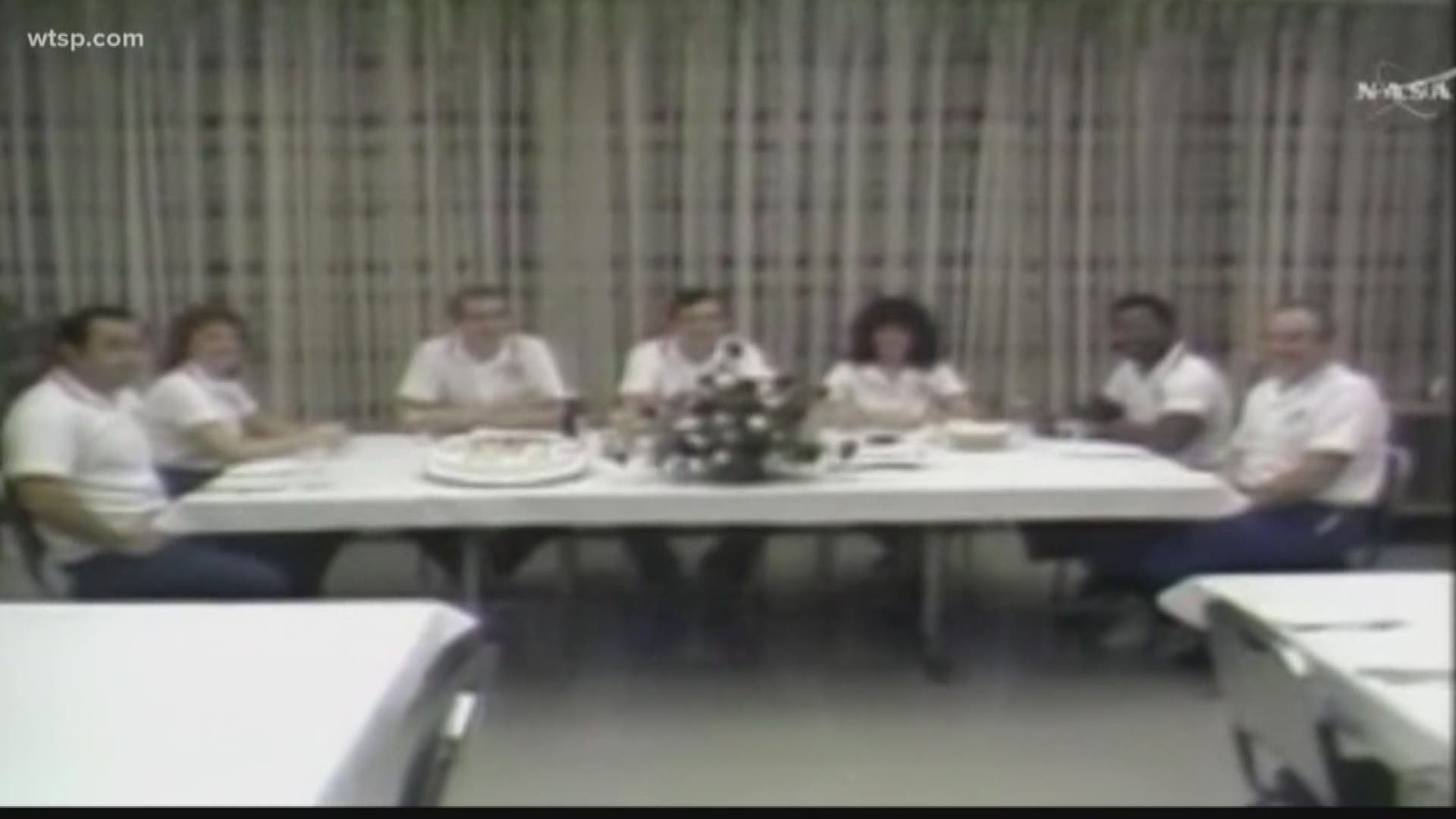CAPE CANAVERAL, Fla. — On a cold Florida morning in 1986, the space shuttle Challenger lifted off from Cape Canaveral carrying seven astronauts into space.
Except the crew never made it. The Challenger exploded just 73 seconds after launch when a booster engine failed.
Thirty-three years later, NASA and the rest of America still honor the Challenger crew: Sharon Christa McAuliffe, Gregory Jarvis, Judith A. Resnik, Francis R. (Dick) Scobee, Ronald E. McNair, Mike J. Smith and Ellison S. Onizuka.
PREVIOUS: Remembering the space shuttle Challenger
NASA said the shuttle was about 46,000 feet in the air when it exploded. It was traveling at twice the speed of sound. Two-three minutes after the explosion and breakup, pieces of the Challenger began falling into the Atlantic Ocean.
The official report from NASA to President Ronald Reagan said the accident was caused by a leak in the rocket booster joint that allowed superheated gas to burn through the external tank, causing its collapse. It was relatively cold for Florida on Jan. 28, 1986, but the report lists weather only as a contributing factor.
"The future is not free: the story of all human progress is one of a struggle against all odds. We learned again that this America, which Abraham Lincoln called the last, best hope of man on Earth, was built on heroism and noble sacrifice. It was built by men and women like our seven star voyagers, who answered a call beyond duty, who gave more than was expected or required and who gave it little thought of worldly reward."
-- President Reagan, Jan. 31, 1986
The Challenger was one of the first "civilian" flights to space, bringing aboard high school teacher McAuliffe, who was supposed to teach space lessons from the shuttle.
It was the first flight for Jarvis, Smith and McAuliffe. Resnik, Scobee, McNair and Onizuka had all flown before.
►Make it easy to keep up-to-date with more stories like this. Download the 10News app now.
Have a news tip? Email desk@wtsp.com, or visit our Facebook page or Twitter feed.

